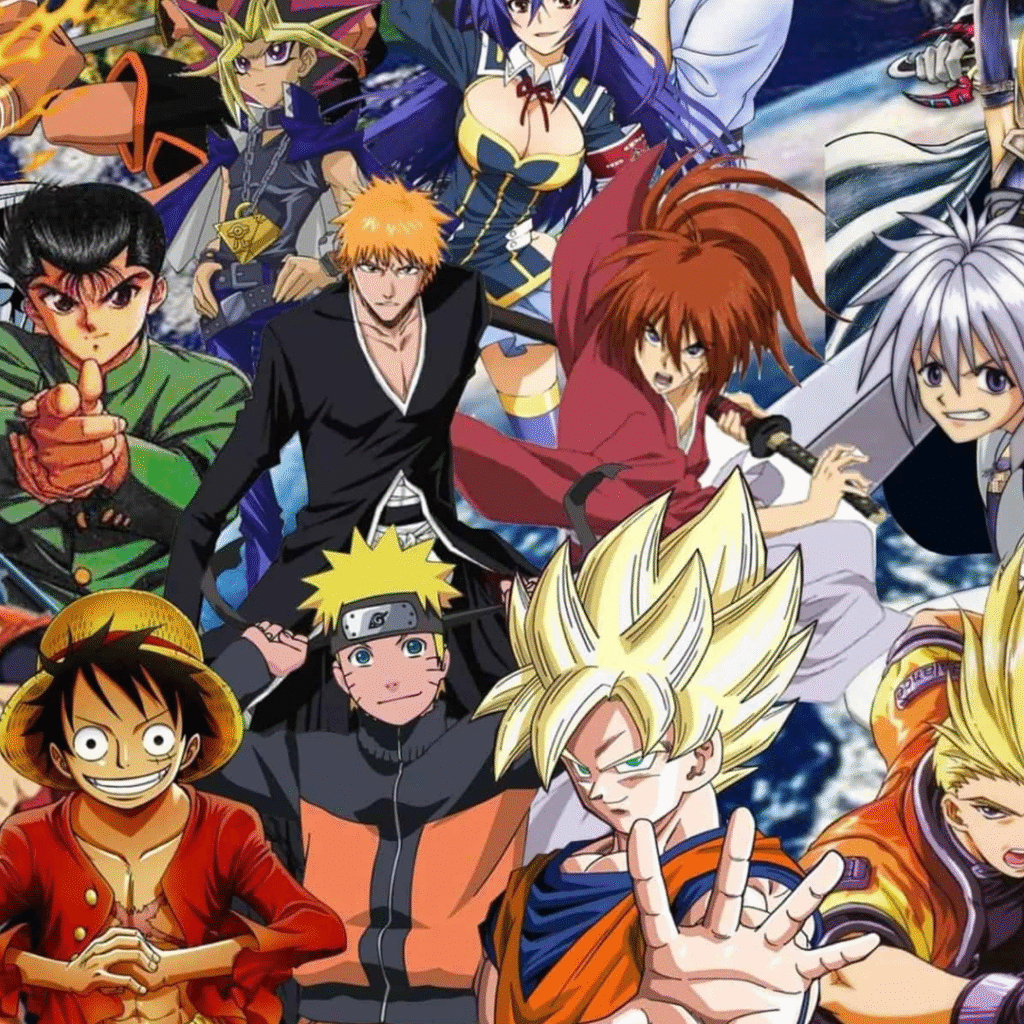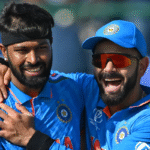Now Reading: Ancient Echoes, Modern Unions: 8 Profound Bhagavad Gita Insights for a Marriage of True Readiness
-
01
Ancient Echoes, Modern Unions: 8 Profound Bhagavad Gita Insights for a Marriage of True Readiness
Ancient Echoes, Modern Unions: 8 Profound Bhagavad Gita Insights for a Marriage of True Readiness
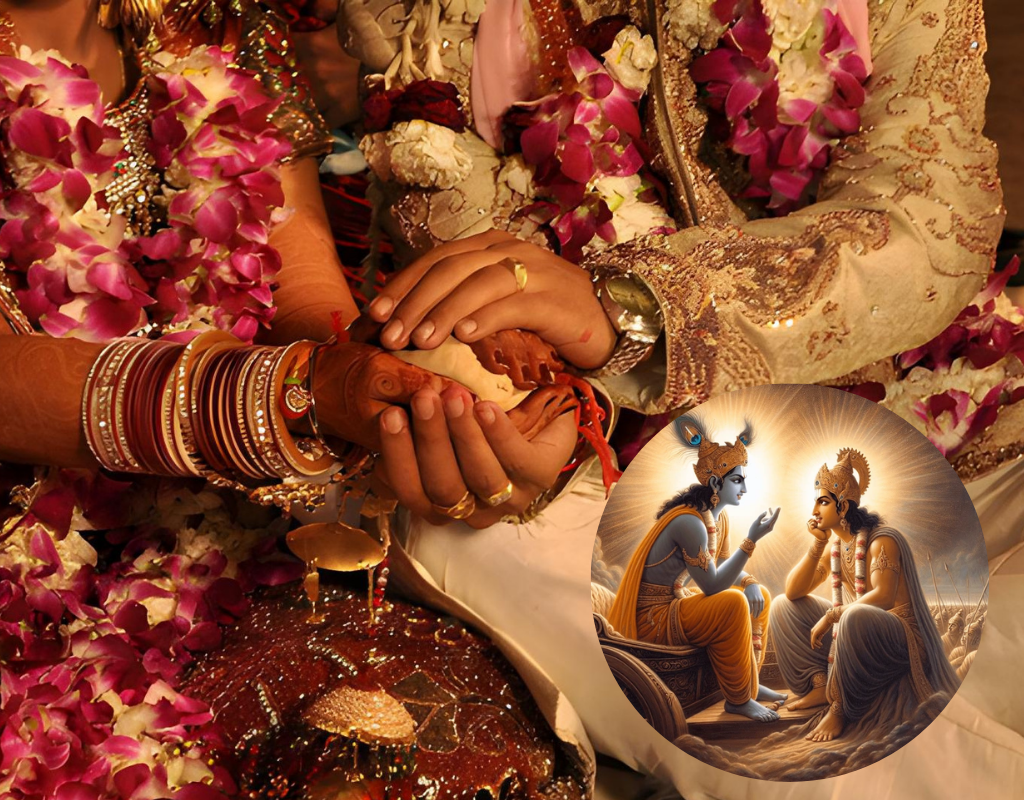
In the era of fleeting trends and endless scroll of opinion, the road to matrimony is more times than not akin to navigating a bewildered maze.
Social media feeds post “relationship goals,” culture places timelines in hushed tones, and individual aspirations pull us in each and every direction.
Amidst all of this chatter, maybe more than at any point in the past, a simple question echoes: When are we actually ready to be committed to a lifelong bond?
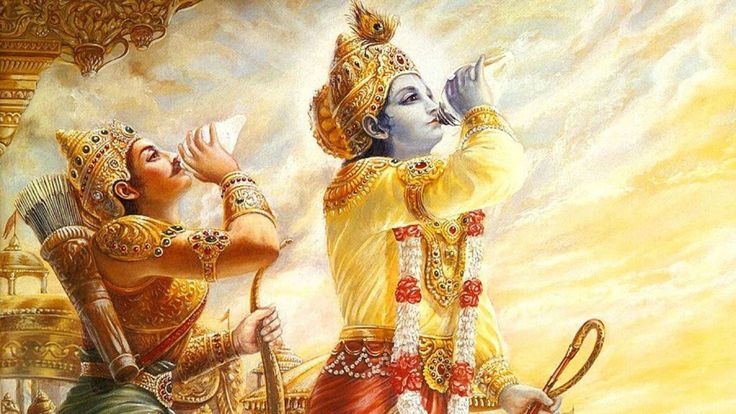
While modern psychology offers good models, ancient wisdom, particularly the Bhagavad Gita’s, is a time-tested guide.
This Indian religious classic, which is a dialogue between Lord Krishna and Arjuna on the battlefield of life, is much more than religious doctrine; it is teaching universal truths about human nature, duty, and the path to inner peace, all of which are inextricably linked to the fulfillment of our closest relationships.
It informs us that actual readiness for marriage is not an issue of age, but of deep self-awareness, inner strength, and a sense of purpose.
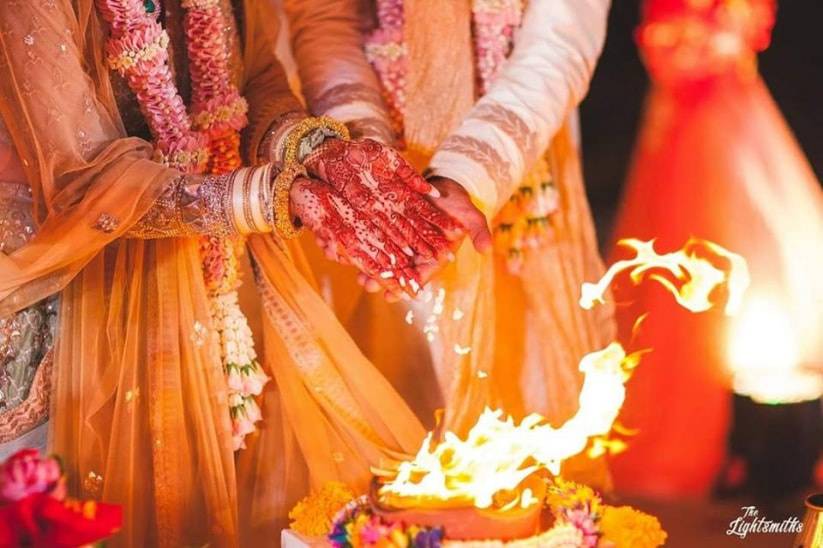
Let’s discuss eight life-changing facts of the Bhagavad Gita that illuminate the path to a truly ready and strong marriage.
Beyond the Calendar: Entering the Right Stage of Self-Evolution
Society has always laid down an “ideal” age for wedlock, an age that keeps changing with each new generation. But the Bhagavad Gita silently defies this age mania.
Lord Krishna never questions Arjuna regarding his age on the night of war; instead, He inquires from Arjuna regarding his mind, his understanding of duty (Dharma), and his determination.
Similarly, the Gita reminds us not to think of marriage as a box on a list of sequential ages, but as a choice made out of inner readiness.
Are you merely bowing to external pressure, or are you really prepared for the serious emotional, mental, and spiritual task that is marriage?
The “right age” is only the time in your life when you have learned enough about yourself and become stable enough to be aware and make a conscious decision of companionship, not due to conditioning or fear.
Marriage as Dharma: Becoming Tuned into Your True Life Purpose
The Bhagavad Gita concept of Dharma refers to one’s inherent duty, righteous living, and the very purpose inherent in the nature of their being. Krishna famously states:
“It is better to perform one’s own duties, however imperfectly, than to do another’s duty perfectly.” (Bhagavad Gita 3.35)
Applying this to marriage, it becomes a strongly persuasive injunction. Are you considering marriage as an extension of your Dharma, a conscious decision that will follow your very essence of values and life path?
Or is it a rash step, taken so that you will be able to fulfill someone else’s dreams? An expensive marriage, according to this wisdom, is not a coming together of two individuals, but an intersection of two purposes.
Where both parties are anchored to their own selves and understand their own specific contributions, the marriage is a productive team effort, rather than a prime source of disenchantment and bitterness.
The Rock-Solid Foundation: Why Understanding One’s Self Comes Before Partnership
In Chapter 6, the Gita portrays the ideal yogi – one who is steadfast, unmoving in the ups and downs of life, and rooted in the Self. This is a person who has achieved the tough work of self-reflection.
Marriage, with its natural ebb and flow, needs a resilient self. Prior to seeking out a partner who will “complete” you, the Gita poses, in effect: Are you already complete?
Reflect on these questions with ruthless honesty:
Am I seeking a partner to fill a void inside me, or to share the richness of my life?
Do I understand my own emotional landscape, my hot buttons, my assets, and my flaws?
The Gita teaches that true love arises from a place of inner completion, not deficiency. As we build a solid sense of self, we enter into a partnership as two complete individuals choosing to walk together, not two halves desperately searching for wholeness.
The Paradox of Love: Detachment as the Path to True Connection
One of the most freeing teachings of the Bhagavad Gita is about Nishkama Karma – doing without attachment to the outcome. Krishna tells us:
“You have a right to perform your prescribed duty, but you are not entitled to the fruits of action. Never consider yourself the cause of the results of your activities, and never be attached to not doing your duty.” (Bhagavad Gita 2.47)
Applied to marriage, it is revolutionary. It does not suggest indifference, but love without possessiveness, fear, and control. When we marry out of fear of loneliness, peer pressure, or a desire to “fix” someone, we create an attachment-based relationship in anticipation and attachment for outcomes.
Real, high-value love, as the Gita teaches us, is an exercise of pure giving and respect between peers. It involves loving your partner for what they are, without expecting them to fit your dream.
This paradoxically results in a deeper and longer-lasting connection, as it gives both partners the space to develop in the relationship without being held back by unrealistic expectations.
Decoding Motivation: The Power of the Three Gunas
The Bhagavad Gita presents the idea of the three Gunas – the inherent qualities of material nature:
Sattva: Purity, clarity, wisdom, peace.
Rajas: Passion, ambition, activity, desire.
Tamas: Ignorance, inertia, delusion, darkness.
Our motives for the major life decisions, like marriage, are usually colored by one or more of these Gunas.
A Tamasic decision can come out of fear, sloth, or a confused impulse.
A Rajasic decision can be due to strong romantic love alone, external ambitions, or the desire to control.
A Sattvic choice is one that originates from clarity, interior peace, and a genuine desire to cultivate and be in harmony.
Before a commitment is made, a critical self-examination must be done: Is my decision to marry prompted by a clear, calm comprehension (Sattva), or are temporary passion (Rajas) or long-standing fears (Tamas) at work?
A Sattvic marriage, founded on clear comprehension and mutual desire for individual and spiritual development, is the richest ground for sustained happiness and growth.
Doubt’s Acceptance: The Arjuna Moment on Every Relationship Path
When the Bhagavad Gita opens, Arjuna is engulfed in profound doubt and reluctance about his responsibility. That’s the same kind of doubt many will feel contemplating marriage.
Is it the correct spouse? Is this the right time? Am I truly ready to embark on this long-term relationship?
Lord Krishna does not dismiss Arjuna’s doubts; instead, He lovingly leads him through a process of self-reflection and inner realization.
Similarly, if you are facing profound doubts about marriage, the Gita suggests that it is a time to reflect seriously rather than suppress. Sit quietly, pause to reflect, and seek inner guidance.
The most honest responses are rarely learned through haste or external pressure but through quiet and true self-inquiry.
Marriage as a Holy Sadhana: A Way of Spiritual Development
Although the Bhagavad Gita speaks primarily of the individual Self and the Divine, its instruction offers a firm pattern for interpreting human relationships, such as marriage. It offers the potential of marriage as a profound sadhana, a spiritual discipline.
Your partner may be your catalyst for growth, your mirror to reflect your strength and weakness, and your walking companion through the spiritual experiences of life.
Instead of merely asking, “Am I old enough to marry?”, a more profound question must be answered:
“Am I becoming the individual who can best support, challenge, and grow with another spirit on this holy path?”
Viewing marriage as a journey towards co-evolution shifts the relationship from mere friendship to a profound spiritual union.
Timeless Wisdom in a Transient World: A Concluding Reflection
In an increasingly fast-paced world of instant gratification, dating apps, and the sterilized lives of social media, the Bhagavad Gita’s lessons remain a timeless source of guidance. It doesn’t provide canned “yes” or “no” answers but provides a well-humanized system of discrimination.
The Gita teaches us:
Do not marry to avoid loneliness.
Do not marry just to belong.
Do not marry out of pure external pressure.
Instead, begin the marriage journey with a clear mind, calm heart, readied soul for actual connection, and with knowing your own Dharma within that sacred union. A few may prosper at first in marriages, others find profound happiness in middle age, and a few may even choose other routes altogether but have just as meaningful lives.
Finally, the “right moment” for marriage is not determined by your age, but by your deep inner preparedness – a preparedness nurtured by the eternal wisdom that the Bhagavad Gita so bountifully provides. Make your choice based on the inner sense of self-knowledge and wisdom, not the fleeting deadlines of the world.
Also read: The #1 Truth: RJ Mahvash’s Powerful Journey Beyond Gossip And Glamour – ParsoTak.in


